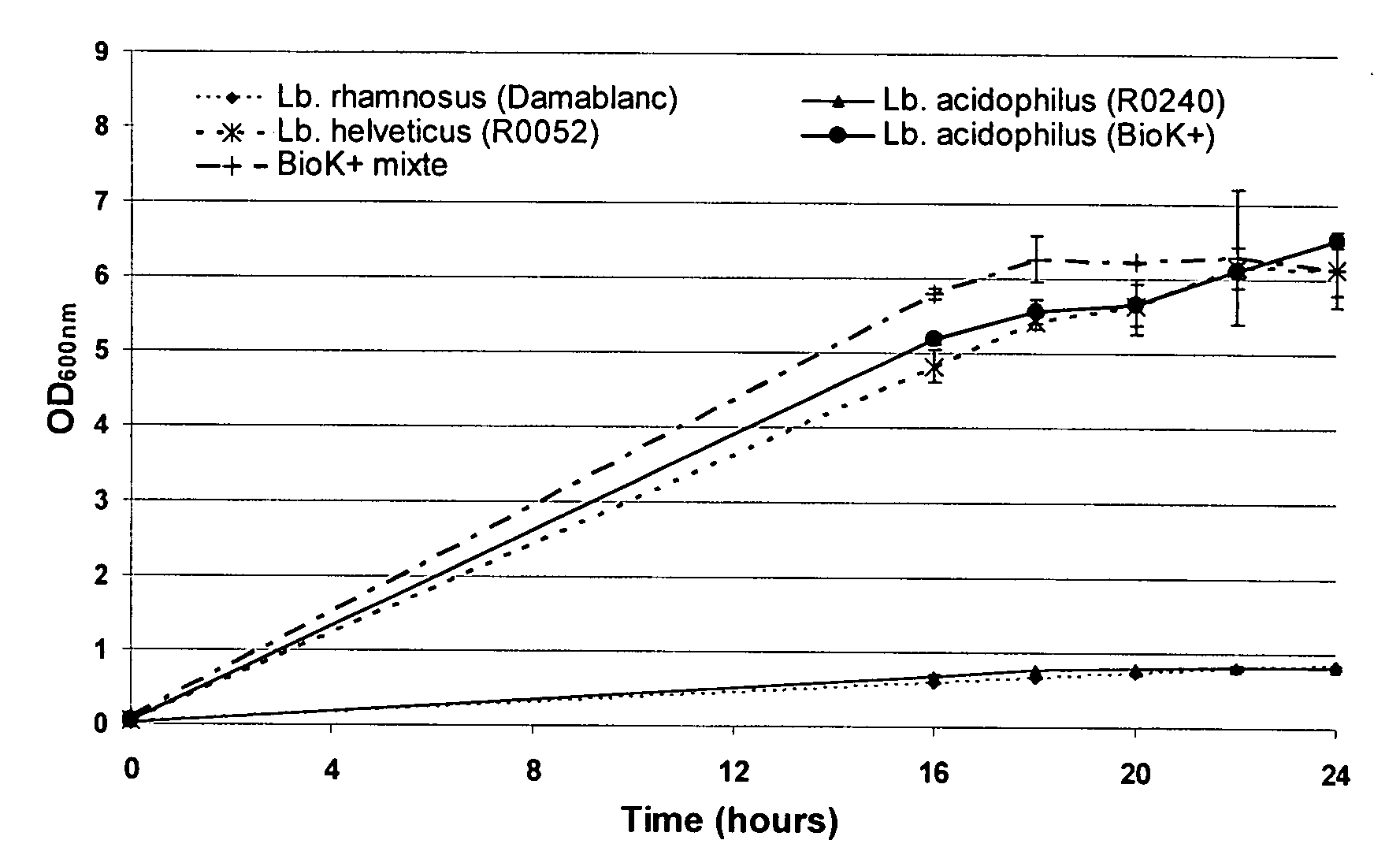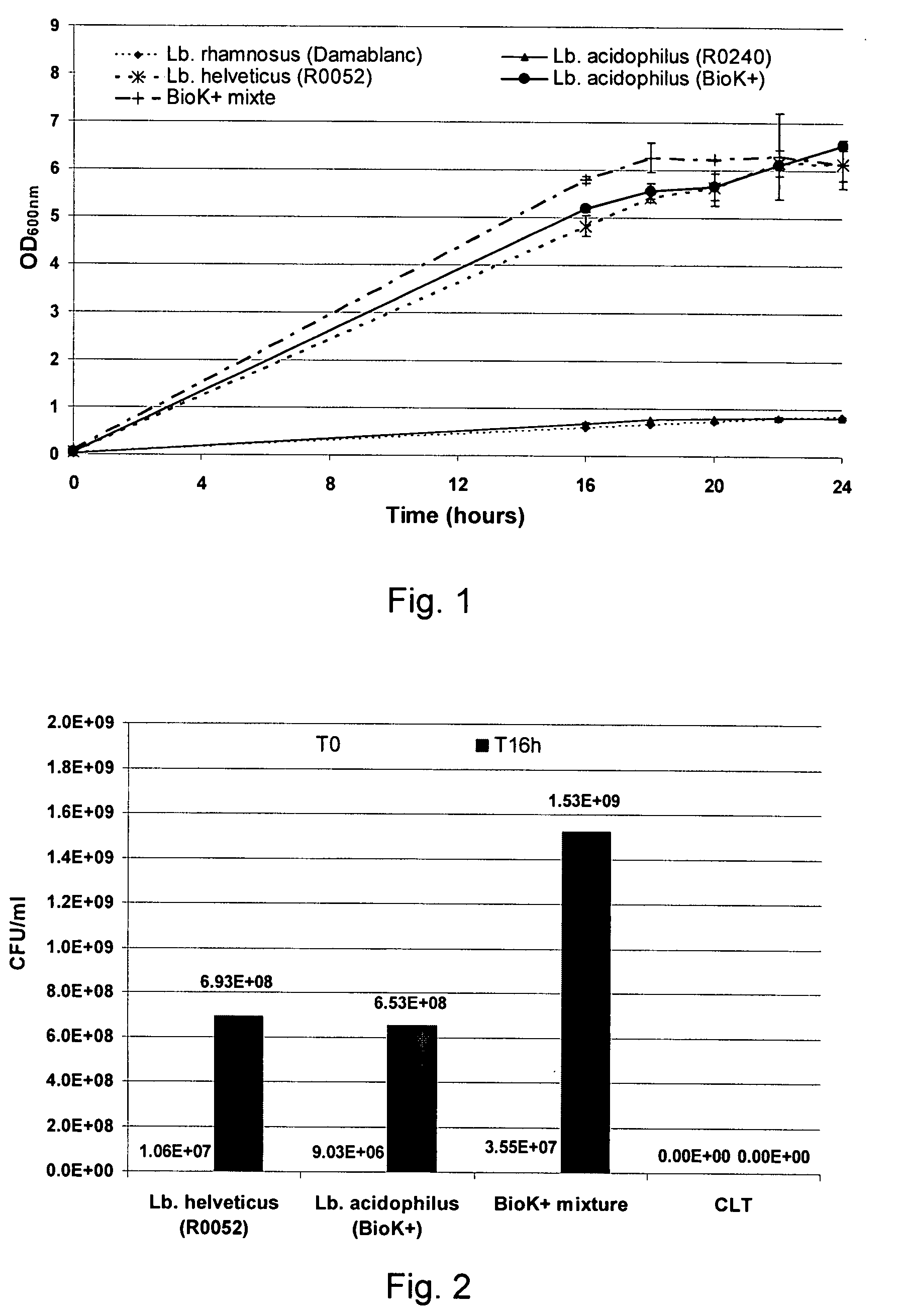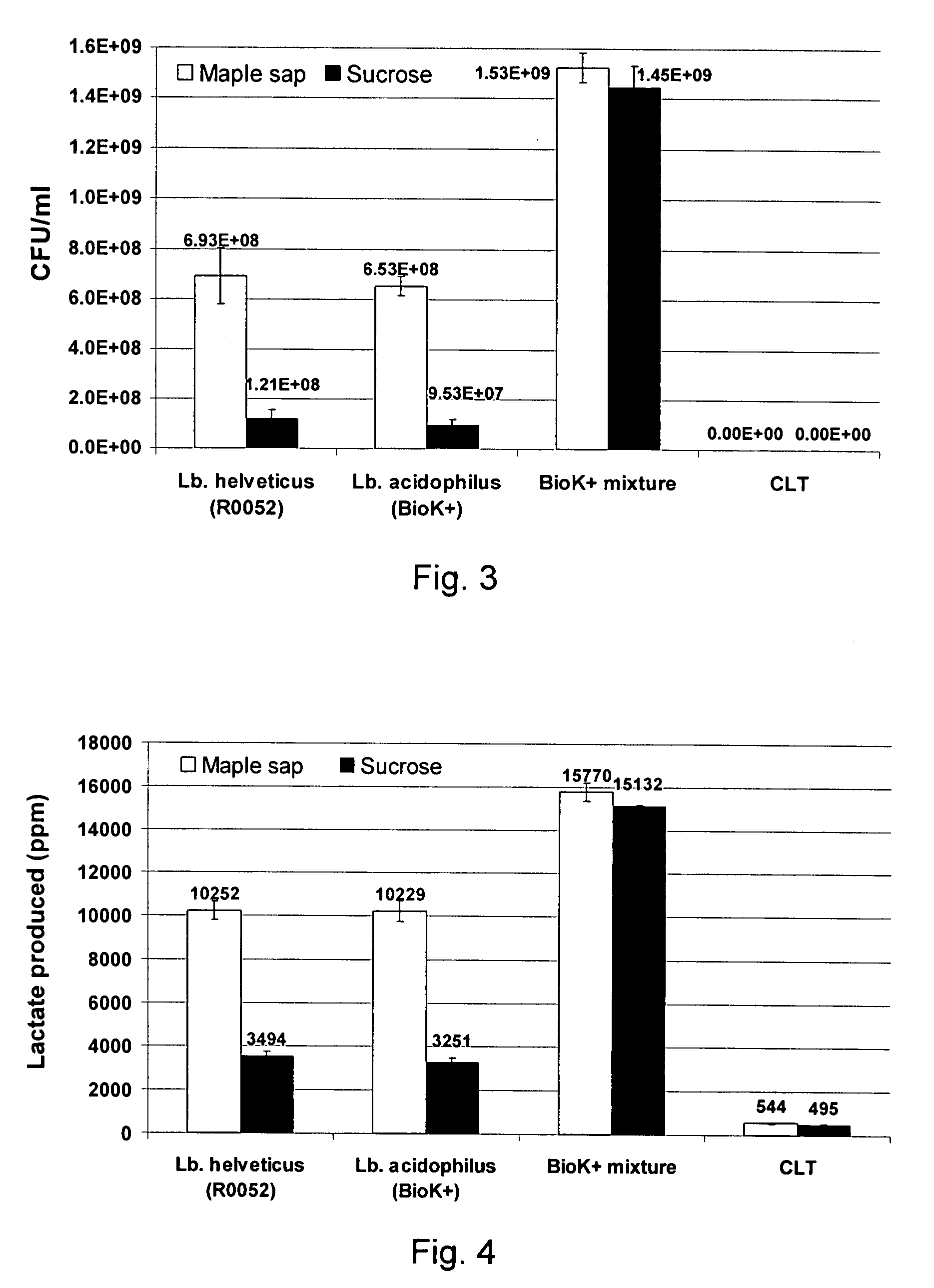Production of probiotic bacteria using maple sap
a technology of probiotic bacteria and maple sap, applied in the field of biotechnology, can solve the problems of large surplus of inventory, and achieve the effects of improving growth yield, good growth, and improving growth yield
- Summary
- Abstract
- Description
- Claims
- Application Information
AI Technical Summary
Benefits of technology
Problems solved by technology
Method used
Image
Examples
example 1
Growth in Maple Sap-based Medium Supplemented With Soy Drink
[0022] Filtered-sterilized maple sap (50 mL) at pH 7.0 having about 16,000 ppm sucrose, about 400 ppm glucose and 400 ppm fructose was inoculated with 0.1 mL of commercial Bio-K+ product, which contains high amounts of probiotic fermentive bacteria, in this case, two lactobacilli, L. casei and L. acidophilus. Although maple sap is a good carbon source, it has a low carbon to nitrogen (C / N) ratio, therefore it was supplemented with either ammonium sulfate (2 mM) or a commercial soy drink, UHT, (30% (v / v) soy drink was added to 70% (v / v) maple sap) as a source of nitrogen. The cultures were incubated at 30° C. for two days under anaerobic conditions (in closed serum bottles with the headspace flushed with argon).
[0023] In the non-inoculated controls, no bacterial growth (i.e. no turbidity) was observed in any of the conditions mentioned. The non-supplemented maple sap and the maple sap supplemented with ammonium sulfate onl...
example 2
Growth in Maple Sap-based Medium
[0029] As shown in FIG. 1, the maple sap-based culture medium composed of maple sap from CETTA, veggietones pea, yeast extract, K2HPO4, MnSO4 and MgSO4 supported good growth (final OD600nm around 6.0 reached between 18 and 20 hours of incubation) of three of the five strains tested. Based on these results, the viable counts were determined for the three best growers (L. helveticus R0052, L. acidophilus from BioK+, and the commercial mixed culture of BioK+).
[0030]FIG. 2 shows the cfu counts obtained after 16 hours of incubation in the maple sap-based medium. While L. acidophilus from BioK+ and L. helveticus R0052 grew to 6.0×108 cfu / mL, the BioK+ mixture grew to 1.5×109 cfu / mL. This latter cell concentration represents the targeted concentration for industrial production. CLT is a control with no sugar source.
example 3
Comparison of Maple Sap-based and Sucrose-based Media
[0031]FIG. 3 shows that the use of maple sap-based medium improves production of probiotic bacteria in comparison to sucrose-based medium. In particular, the viable counts of L. acidophilus from BioK+ and L. helveticus R0052 were 5 times higher when maple sap was used as a basis for the preparation of the culture medium. The media were composed of the respective sugar sources together with veggietones pea, yeast extract, K2HPO4, MnSO4 and MgSO4. CLT is a control with no sugar source.
[0032] This “maple effect” was also observed in the production of lactic acid, as shown in FIG. 4. BioK+ mixture was the best producer with 15 g / L of lactic acid after 16 hours of fermentation. The production of lactic add by the two other strains (L. acidophilus from BioK+ and L. helveticus R0052) was around 3.5 g / L in the sucrose-based medium. However, the production was more than two-fold higher (10 g / L) after fermentation in the maple sap-based m...
PUM
 Login to View More
Login to View More Abstract
Description
Claims
Application Information
 Login to View More
Login to View More - R&D
- Intellectual Property
- Life Sciences
- Materials
- Tech Scout
- Unparalleled Data Quality
- Higher Quality Content
- 60% Fewer Hallucinations
Browse by: Latest US Patents, China's latest patents, Technical Efficacy Thesaurus, Application Domain, Technology Topic, Popular Technical Reports.
© 2025 PatSnap. All rights reserved.Legal|Privacy policy|Modern Slavery Act Transparency Statement|Sitemap|About US| Contact US: help@patsnap.com



